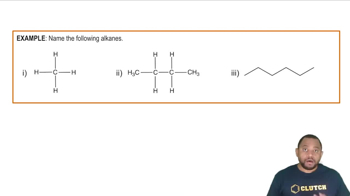Determine if each of the following cycloalkanes or alkenes can exist as cis–trans stereoisomers. For those that can, draw the two isomers. Label each of the isomers you drew as the cis stereoisomer or the trans stereoisomer.
(b) CH3CH2CH2CH2CH=CH2
 Verified step by step guidance
Verified step by step guidance Verified video answer for a similar problem:
Verified video answer for a similar problem:

